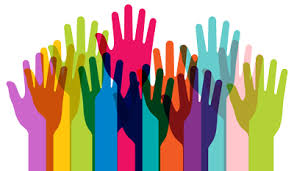Diversity – Does it Matter in the Legal Profession?

By: Matthew Dietz
The Florida Bar is fully committed to the enhancement of diversity within the Bar, the legal profession, legal education, and in the justice system, and affirms its commitment toward a diverse and inclusive environment with equal access and equal opportunity for all.
–The Florida Bar Board of Governors, May 2010
On June 23, 2015, the Supreme Court issued their ruling in Fischer v. University of Texas at Austin, Case No. 14-981, upholding race conscious admissions policies at the University of Texas, as long as it is only a factor in a holistic review as a means of obtaining the educational benefits that flow from student body diversity. Justice Kennedy issued a muted opinion from the Court touting the benefits of diversity and quoted from a prior decision stating:
[T]he compelling interest that justifies consideration of race in college admissions is not an interest in enrolling a certain number of minority students. Rather, a university may institute a race-conscious admissions program as a means of obtaining “the educational benefits that flow from student body diversity.” … As this Court has said, enrolling adverse student body “promotes cross-racial understanding, helps to break down racial stereotypes, and enables students to better understand persons of different races.” … Equally important, “student body diversity promotes learning outcomes, and better prepares students for an increasingly diverse workforce and society.”
Diversity also promotes the image of impartial justice, knowing that lawyers and judges that have the panoply of cross-racial, and cross-cultural experiences will not have deep seated stereotypes or prejudices against persons because of who they are, what they believe, or what they look like. However, the diversity within the Florida Bar and the Florida Judiciary does not reflect the population of Florida. If one looks at the statistics of the Florida lawyers and judiciary, as compared to the population of Florida, it is elemental why it is important to ensure that diversity is encouraged to ensure the appearance of justice and the destruction of stereotype.
| Category | Percent lawyers in Florida[1] | Percent Judges in Florida[2] | Percent in Jud. Nominating Commission[3] | Percent Population in Florida[4] |
| White/Caucasian | 83 | 84.1 | 86 | 55.3 |
| Hispanic | 10 | 8.9 | 9 | 24.5 |
| African American/Black | 3 | 6.7 | 4 | 16.8 |
| Asian/Pacific Islander | 1 | .3 | 2.9 | |
| Other Race/Ethnicity | 3 | 2.5 | ||
| LGBT | 3 | 3.5 | ||
| Persons with Disabilities | 2 | 13.1 |
Why does it matter for persons with disabilities?
In an interview, Mr. Trump said U.S. District Judge Gonzalo Curiel had “an absolute conflict” in presiding over the litigation given that he was “of Mexican heritage” and a member of a Latino lawyers’ association. Mr. Trump said the background of the judge, who was born in Indiana to Mexican immigrants, was relevant because of his campaign stance against illegal immigration and his pledge to seal the southern U.S. border. “I’m building a wall. It’s an inherent conflict of interest,” Mr. Trump said.[1]
Mr. Trump has stereotyped a judge solely because of his ancestry and a stereotype that the judge may not be in line with his views. With a person with a disability, each lawyer, juror, and the judge carries with them a lifetime of stereotypes and misconceptions about persons with disabilities. Most of them start with….”I once had a friend that had a family member that…” Accordingly, the person’s whole perception of disability is built around the abilities of one person, or, even worse, what people see on television. So essentially, there is the myth of the “super-crip” or the incapacitated person.
The “supercrip” as superhuman that is lauded by the able-bodied as the inspirational person who “overcame” their disability. If you have a disability in one area, then you more than make up for it in all other ways. If you are blind, you can identify a person’s footfalls; if you are deaf, you can read lips from two miles away; if you are autistic, you are a mathematical savant. It is “inspirational” for a person who has a disability to be successful in society, when, in truth, persons with disabilities do not need to act as tools to inspire, but just to live.
On the other hand, the incapacitated person, who is not able to be productive and is essentially invisible is as common. The person who is shuttered in a nursing home and neglected because society does not provide access. Society considers these folks “better off” where they can be taken care of, as they have nothing to contribute to society.
Both of these stereotypes are pernicious.
So, as a trial lawyer for a disability related claim, the most difficult part is dealing with these stereotypes and educating my colleagues in the legal profession that people with disabilities are people, just like them. We all need assistance at one time or another, just like them. We all need accommodations at one time or another, and we all have something to contribute.
But, when there is two percent of lawyers who have disabilities, a negligible number of judges with disabilities, and no active recruitment of persons with disabilities in law schools, it’s difficult to say to my clients that this judge or lawyer has ever had contact with a deaf person or a blind person. In every single one of my cases involving a deaf person regarding not being able to get an interpreter for a critical situation in his or her life, the deposition of that deaf person usually includes a detailed description of how a deaf person uses a videophone, drives, or other daily living activities.
So, when Justice Kennedy states educational diversity “promotes cross-racial understanding, helps to break down racial stereotypes, and enables students to better understand persons of different races.” The same concept includes disability, and disability related stereotypes and attitudinal barriers against stereotypes must be broken down.
[1] http://www.wsj.com/articles/donald-trump-keeps-up-attacks-on-judge-gonzalo-curiel-1464911442
[1]2015 Florida Bar Membership Opinion Survey – In December 2015, The Florida Bar sent an online survey link to a random sample of 3,078 in-state and out-of state, eligible members. By the cut-off date of December 30, the Bar had received 1,074 completed questionnaires, for a response rate of 35%. This response rate is acceptable for this type of lengthy online survey. https://www.floridabar.org/TFB/TFBResources.nsf/Attachments/4ECB247149A8546C85257F41007B6479/$FILE/2015%20Membership%20Opinion%20Survey%20-%20Final%20Report.pdf?OpenElement
[2] The Florida Bar President’s Special Task Force to Study Enhancement of Diversity in the Judiciary and on the JNC’s, found at https://www.floridabar.org/TFB/TFBResources.nsf/Attachments/A4E41688279C883585257CE1004A0B9E/$FILE/Appendices%20to%20Task%20Force%20Report.pdf?OpenElement
[3] http://www.floridabar.org/TFB/TFBPublic.nsf/WNewsReleases/4F2B3E1B6C00CB3785257C8B00671B0B?OpenDocument
[4] US Census Quick facts for Florida information, found at https://www.census.gov/quickfacts/table/DIS010214/12.
For Disability Statistics – ACS Disability Statistics 2010-2014, found at http://factfinder.census.gov/faces/tableservices/jsf/pages/productview.xhtml?pid=ACS_14_5YR_S1810&prodType=table
For LGBT statistics – http://www.lgbtmap.org/equality_maps/profile_state/10













